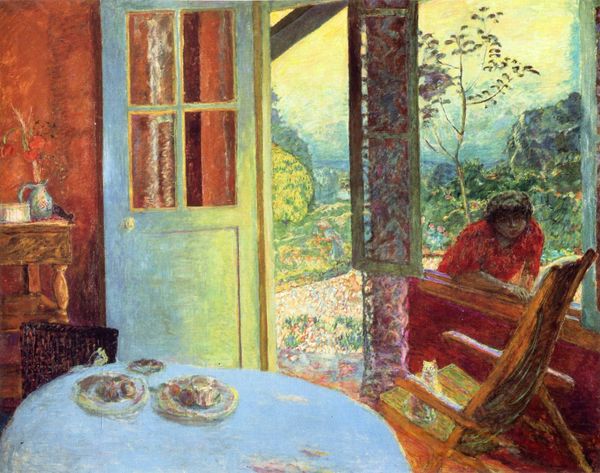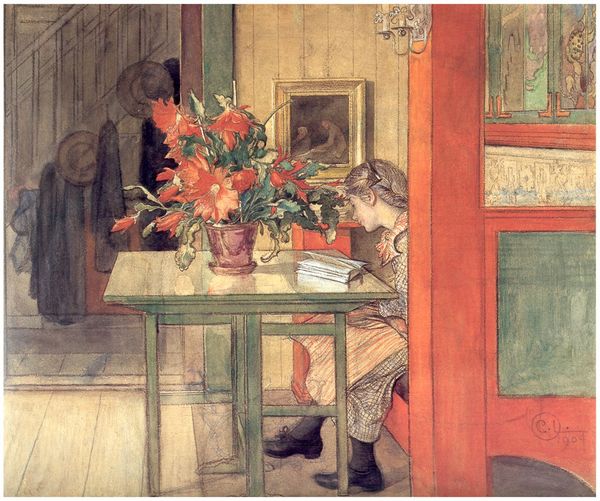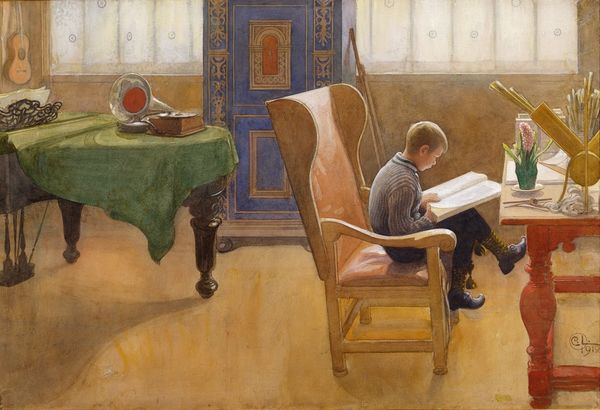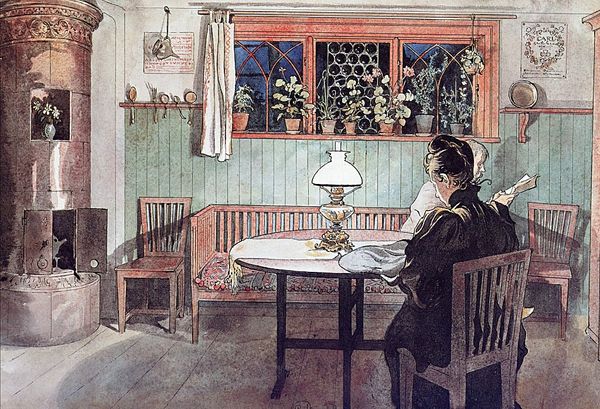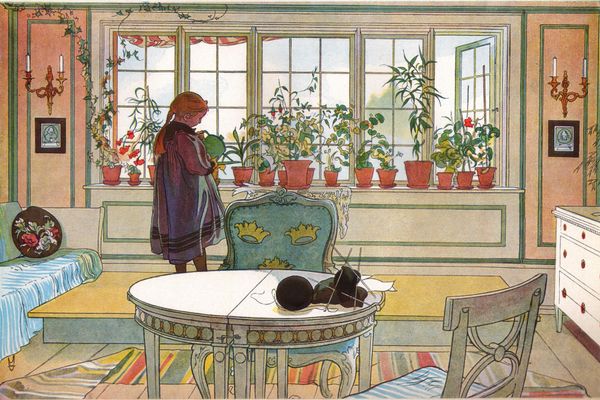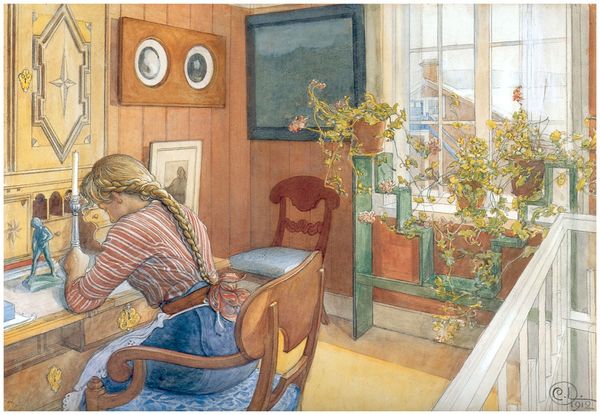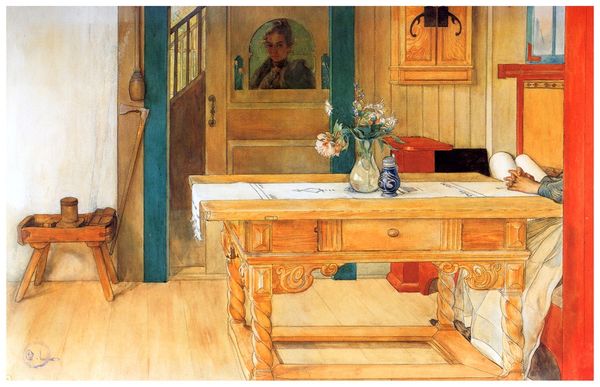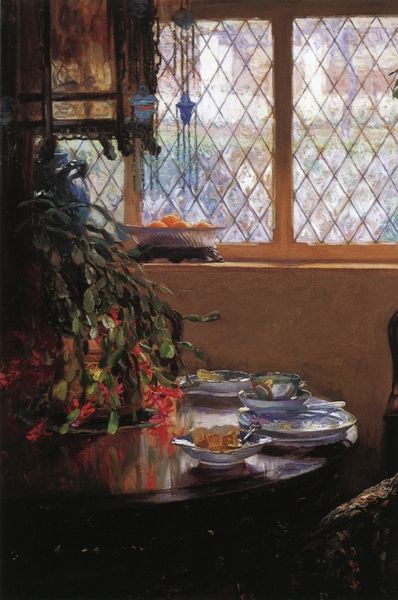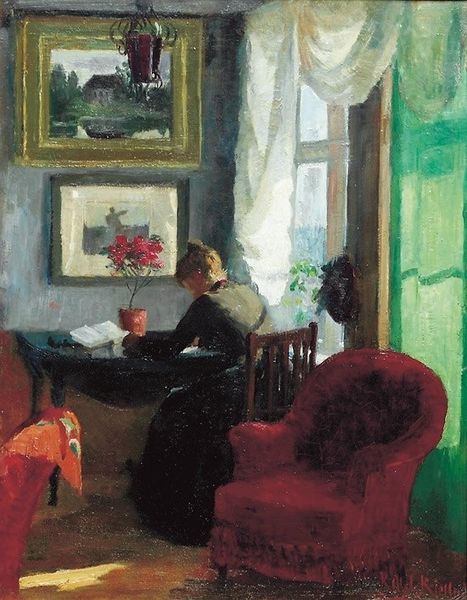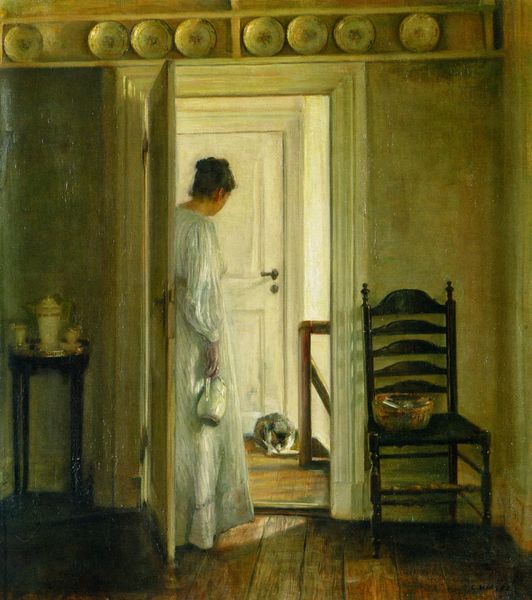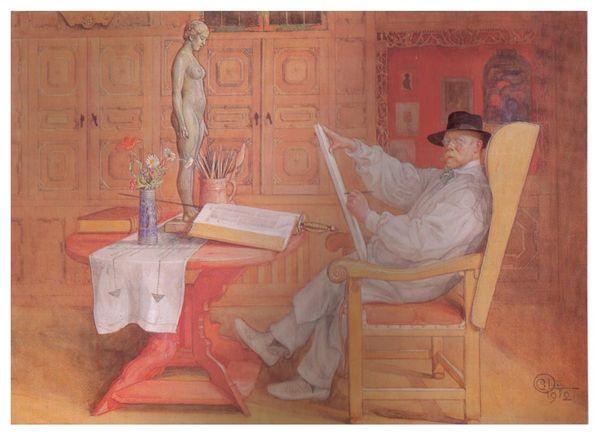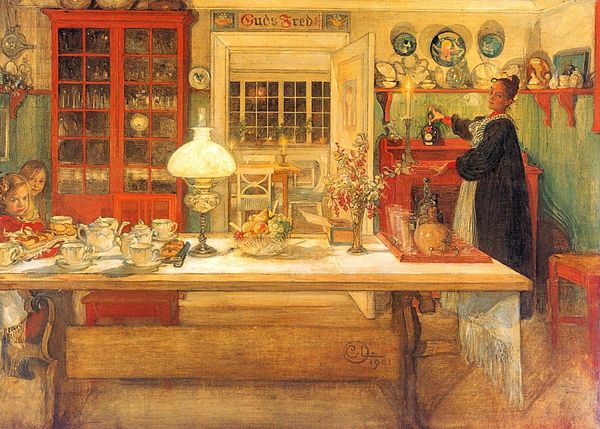
watercolor
#
portrait
#
oil painting
#
watercolor
#
child
#
intimism
#
genre-painting
#
northern-renaissance
#
portrait art
#
watercolor
Copyright: Public domain
Editor: So, we have "Esbjorn Doing His Homework" here. It’s likely a watercolor by Carl Larsson. There’s such a feeling of quiet boredom in this piece! The red desk really pops against the yellow walls. What can you tell me about this artwork? Curator: This image speaks volumes about the cultural ideals Larsson promoted. He presented his own home and family as models of Swedish domesticity, emphasizing education and childhood as integral components of a harmonious society. Editor: How were these paintings received by the public? Curator: Larsson’s paintings like this, romanticized domestic life and contributed to a specific vision of Swedish identity that became very popular. But remember, this idealized view often obscures the realities of the working class and marginalized groups during that period. Look at how much *stuff* is in this one room alone: it represents a comfortable existence. The child is a portrait of health and wealth. What might someone from a lower socio-economic status have felt looking at this image? Editor: That's interesting... It’s like this is almost propaganda in its own way. Creating a singular narrative and image of Swedish life that perhaps wasn't the reality for everyone. The very selection of this scene—a child's boredom with schoolwork—assumes a level of privilege. Curator: Precisely. Art serves a public role, and we must analyze what that role communicates and to whom. Larsson was highly influential in shaping perceptions and, in a way, setting a standard for how Swedish families *should* live, further amplified by institutions adopting these images. Editor: It’s fascinating how a seemingly innocent scene can be so loaded with socio-political meaning. It definitely shifts how I initially viewed the painting! Curator: Exactly! Analyzing the historical and cultural contexts is crucial. Always consider whose story is being told, and whose is being left out.
Comments
No comments
Be the first to comment and join the conversation on the ultimate creative platform.
